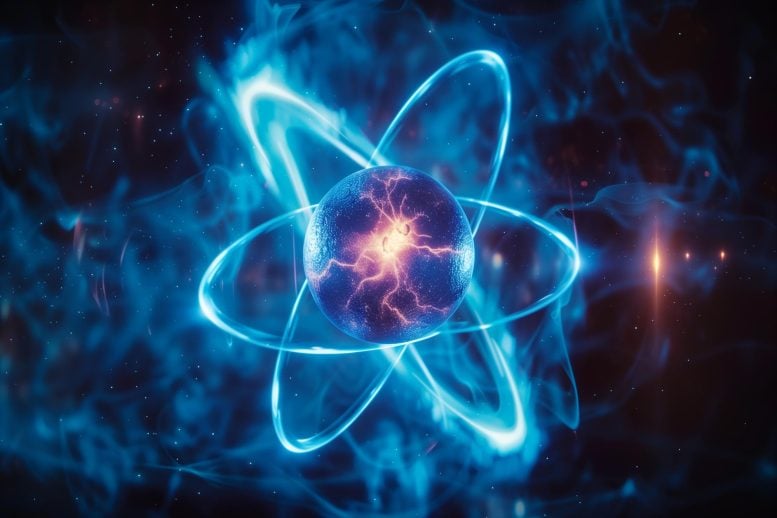
UCLA physicists have developed a nuclear clock using thorium atoms, potentially the most accurate clock ever, which could redefine fundamental constants and advance precision in technology and science. Credit: SciTechDaily.com
The findings may lead to the creation of the most precise clock ever, facilitating advancements in deep space navigation and communication.
Using a laser to raise the energy state of an atom’s nucleus, known as excitation, can lead to the development of the most precise atomic clocks. This process has been challenging because the electrons surrounding the nucleus are highly reactive to light, necessitating more light to affect the nucleus. UCLA physicists have overcome this by bonding the electrons with fluorine in a transparent crystal, allowing them to excite the neutrons in a thorium atom’s nucleus using a moderate amount of laser light. This achievement paves the way for significantly more accurate measurements of time, gravity, and other fields, far surpassing the current accuracy levels provided by atomic electrons.
For almost half a century, physicists have envisioned the possibilities that could arise from elevating the energy state of an atom’s nucleus with a laser. This breakthrough would enable the replacement of current atomic clocks with a nuclear clock, the most accurate timekeeping device ever conceived. Such precision would revolutionize fields like deep space navigation and communication.
It would also allow scientists to measure precisely whether the fundamental constants of nature are, in fact, really constant or merely appear to be because we have not yet measured them precisely enough.
Now, an effort led by Eric Hudson, professor of physics and astronomy at UCLA, has accomplished the seemingly impossible. By embedding a thorium atom within a highly transparent crystal and bombarding it with lasers, Hudson’s group has succeeded in getting the nucleus of the thorium atom to absorb and emit photons like electrons in an atom do. The astonishing feat is described in a paper published in the journal Physical Review Letters.
Enhanced Measurement Capabilities
This means that measurements of time, gravity, and other fields that are currently performed using atomic electrons can be made with orders of magnitude higher accuracy. The reason is that atomic electrons are influenced by many factors in their environment, which affects how they absorb and emit photons and limits their accuracy. Neutrons and protons, on the other hand, are bound and highly concentrated within the nucleus and experience less environmental disturbance.
Using the new technology, scientists may be able to determine if fundamental constants, such as the fine-structure constant which sets the strength of the force that holds atoms together, vary. Hints from astronomy suggest that the fine-structure constant might not be the same everywhere in the universe or at all points in time. Precise measurement using the nuclear clock of the fine-structure constant could completely rewrite some of these most basic laws of nature.
“Nuclear forces are so strong it means the energy in the nucleus is a million times stronger than what you see in the electrons, which means that if the fundamental constants of nature deviate, the resulting changes in the nucleus are much bigger and more noticeable, making measurements orders of magnitude more sensitive,” Hudson said. “Using a nuclear clock for these measurements will provide the most sensitive test of ‘constant variation’ to date and it is likely no experiment for the next 100 years will rival it.”
Hudson’s group was the first to propose a series of experiments to stimulate thorium-229 nuclei doped into crystals with a laser, and has spent the past 15 years working to achieve the newly published results. Getting neutrons in the atomic nucleus to react to laser light is challenging because they are surrounded by electrons, which react readily to light and can reduce the number of photons actually able to reach the nucleus. A particle that has raised its energy level, such as through the absorption of a photon, is said to be in an “excited” state.
Challenges and Innovations in Nuclear Physics
The UCLA team embedded thorium-229 atoms within a transparent crystal rich in fluorine. Fluorine can form especially strong bonds with other atoms, suspending the atoms and exposing the nucleus like a fly in a spider web. The electrons were so tightly bound with the fluorine that the amount of energy it would take to excite them was very high, allowing lower energy light to reach the nucleus. The thorium nuclei could then absorb these photons and re-emit them, allowing the excitation of the nuclei to be detected and measured. By changing the energy of the photons and monitoring the rate at which the nuclei are excited, the team was able to measure the energy of the nuclear excited state.
“We have never been able to drive nuclear transitions like this with a laser before,” Hudson said. “If you hold the thorium in place with a transparent crystal, you can talk to it with light.”
Hudson said the new technology could find uses wherever extreme precision in timekeeping is required in sensing, communications, and navigation. Existing atomic clocks based on electrons are room-sized contraptions with vacuum chambers to trap atoms and equipment associated with cooling. A thorium-based nuclear clock would be much smaller, more robust, more portable, and more accurate.
“Nobody gets excited about clocks because we don’t like the idea of time being limited,” he said. “But we use atomic clocks all the time every day, for example, in the technologies that make our cell phones and GPS work.”
Above and beyond commercial applications, the new nuclear spectroscopy could pull back the curtains on some of the universe’s biggest mysteries. Sensitive measurement of an atom’s nucleus opens up a new way to learn about its properties and interactions with energy and the environment. This, in turn, will let scientists test some of their most fundamental ideas about matter, energy, and the laws of space and time.
“Humans, like most life on Earth, exist at scales either far too small or far too large to observe what might really be going on in the universe,” Hudson said. “What we can observe from our limited perspective is a conglomeration of effects at different scales of size, time and energy, and the constants of nature we’ve formulated seem to hold at this level.
“But if we could observe more precisely, these constants might actually vary! Our work has taken a big step toward these measurements and, either way, I am sure we will be surprised at what we learn.”
“For many decades, increasingly precise measurements of fundamental constants have allowed us to better understand the universe at all scales and subsequently develop new technologies that grow our economy and strengthen our national security,” said Denise Caldwell, acting assistant director of NSF’s Mathematical and Physical Sciences Directorate, which provided funding for the research. “This nucleus-based technique could one day allow scientists to measure some fundamental constants so precisely that we might have to stop calling them ‘constant.’”
Reference: “Laser Excitation of the Th229 Nuclear Isomeric Transition in a Solid-State Host” by R. Elwell, Christian Schneider, Justin Jeet, J. E. S. Terhune, H. W. T. Morgan, A. N. Alexandrova, H. B. Tran Tan, Andrei Derevianko and Eric R. Hudson, 2 July 2024, Physical Review Letters.
DOI: 10.1103/PhysRevLett.133.013201
The research was funded by the U.S. National Science Foundation.




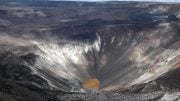
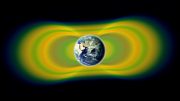
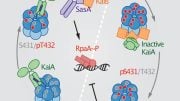

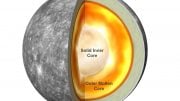
“Humans, like most life on Earth, exist at scales either far too small or far too large to observe what might really be going on in the universe,” Hudson said. “What we can observe from our limited perspective is a conglomeration of effects at different scales of size, time and energy, and the constants of nature we’ve formulated seem to hold at this level. The nucleus-based technique could one day allow scientists to measure some fundamental constants so precisely that we might have to stop calling them“constant”.
VERY GOOD!
From cosmic accretion disks to microscopic particle spins, topological vortex gravitational fields are ubiquitous. The nucleus-based technique is not the most fundamental scale in nature. The physical phenomena observed in scientific experiments can never be the natural essence of things. The natural essence of things needs to be refined and elevated via scientific theories. The reason why human being are smarter than other animals is because they are good at thinking. Perhaps, the topological vortex-based technique can help scientists to understand and measure these fundamental constants more precisely.
Spin is crucial in the evolution of spacetime motion of cosmic matter. Topological vortices are point defects in spacetime. Their rotation is spin. Their interaction is very interesting. Their superposition includes both logical superposition in space-time and factual superposition in reality. Their entanglement includes both surface entanglement and body entanglement. Their deflection methods are endless. In the interaction and balance of topological vortex fractal structures, spin creates everything (including gravity) in the world.
The universe does not make algebra, formulas, or fractions. The universe is a superposition, deflection, and entanglement of geometric shapes, is the interaction and balance of countless topological vortex fractal structures. In these interaction and balance, the past is difficult to change. For the future, some predictable, some unpredictable. But, the present moment is real, certain, and actionable. Physics should not ignore that low dimensional topological fractal structures are the material basis of high-dimensional spacetime.
Scientific research guided by correct theories can help humanity avoid detours, failures, and pomposity. Please witness the exemplary collaboration between theoretical physicists and experimentalists (https://scitechdaily.com/microscope-spacecrafts-most-precise-test-of-key-component-of-the-theory-of-general-relativity/#comment-854286). Some people in contemporary physics has always lived in a self righteous children’s story world. Whose values have been overturned by such a comical and ridiculous reality?
Misguided by the pseudo-scientific theory of Physical Review Letters (PRL), many researchers do not consider the similarities and differences between geometric shapes and physical reality in physics research, but indulge in imagination, and some scholars’ physics research seriously deviates from science, and they are almost unaware of the dirtiness and ugliness. Although mathematics is the language of science, it must be understood correctly.
I hope researchers are not fooled by the pseudoscientific theories of the Physical Review Letters (PRL), and hope more people dare to stand up and fight against rampant pseudoscience.
The so-called academic journals (such as Physical Review Letters, Nature, Science, etc.) firmly believe that two high-dimensional spacetime objects (such as two sets of cobalt-60) rotating in opposite directions can be transformed into two objects that mirror each other, is a typical case of pseudoscience rampant.
Scientific research should be respected, but some people in contemporary physics are not. Please witness the actions of certain individuals and publications. If researchers are really interested in Science and Physics, you can browse https://zhuanlan.zhihu.com/p/643404671 and https://zhuanlan.zhihu.com/p/595280873.
CP violation opened the dirtiest and ugliest era in the history of physics.
If researchers are really interested in the Fundamental Constants of Nature, you can browse https://arxiv.org/ftp/astro-ph/papers/0410/0410365.pdf, https://scitechdaily.com/microscope-spacecrafts-most-precise-test-of-key-component-of-the-theory-of-general-relativity/#comment-849088, and https://zhuanlan.zhihu.com/p/695926158.
If researchers are really interested in the Fundamental Constants of Nature, you can browse https://arxiv.org/ftp/astro-ph/papers/0410/0410365.pdf, https://scitechdaily.com/microscope-spacecrafts-most-precise-test-of-key-component-of-the-theory-of-general-relativity/#comment-849088, and https://zhuanlan.zhihu.com/p/695926158.